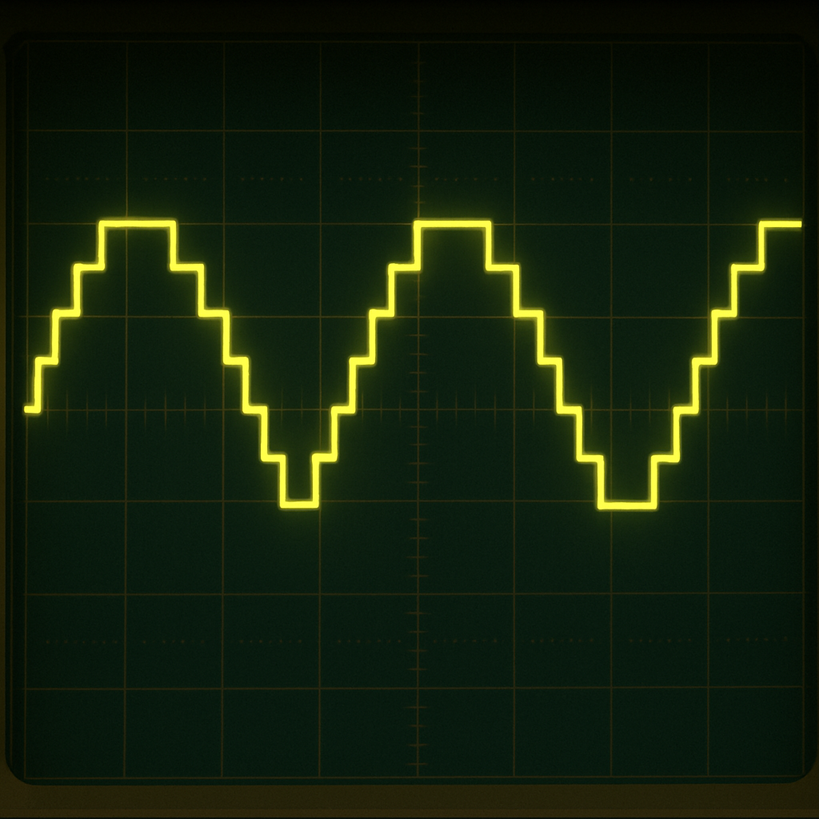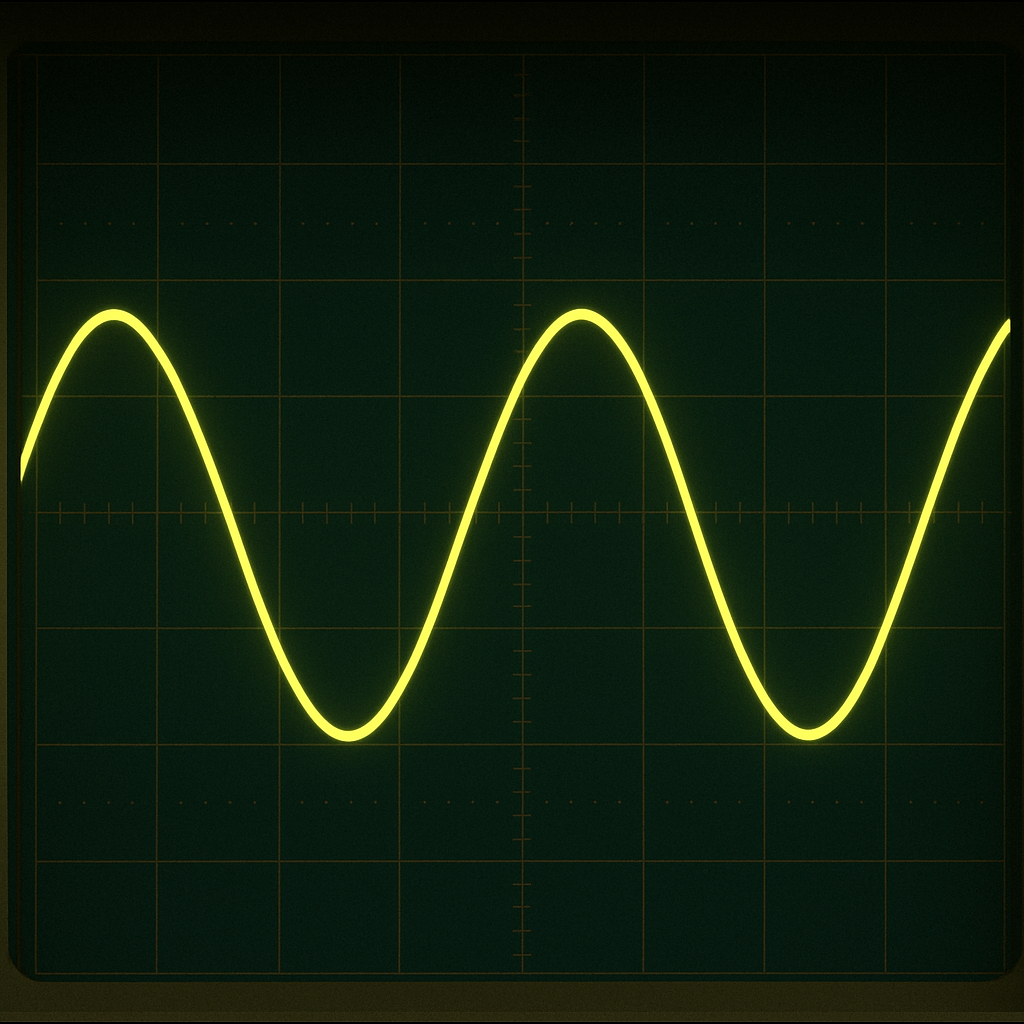When planning a camping power system, inverters often seem like the biggest question mark. Retailers love to push “pure sine wave” models with scary warnings about what will happen if you don’t buy the expensive option. In reality, most campers need far less AC power than they think — and often no inverter at all. Here’s a practical guide.
Types of Inverters
Square wave inverters were the first generation. They produce a very rough signal and are almost extinct because most modern devices either won’t run or make unpleasant noise.

Modified sine wave (or “stepped/digital sine”) inverters are the budget workhorses. They output a blocky version of AC power that looks crude on an oscilloscope but works fine for most electronics.

Pure sine wave inverters generate a clean waveform nearly identical to grid power. They cost more and are marketed as essential for sensitive electronics.

Why Pure Sine Wave Is Rarely Needed
Modern electronics — laptops, phones, tablets, cameras, even most TVs — all use switch-mode power supplies (SMPS). These convert incoming AC to DC internally and don’t care much about waveform shape. As long as the voltage and frequency are correct, they run happily on modified or stepped sine wave power. The power supply first converts back to the DC the inverter used to create AC. So why convert to AC in the first place?
Why convert to AC in the first place?
Where pure sine wave does matter:
- Motors and compressors (AC fridges, pumps, induction cooktops) which run hotter and less efficiently on stepped wave.
- Audio gear with transformers that hum audibly on rough power.
- Microwaves, which cook poorly and stress their magnetrons on modified sine.
- Some UPS and medical gear that refuse to start without a clean waveform.
If you’re not using those items, pure sine adds little real benefit. The higher prices are partly justified by more complex circuitry but also inflated by fear-based marketing.
Inverter Options at a Glance
| Inverter Type | Pros | Cons | Best For |
|---|---|---|---|
| No inverter (all DC) | Highest efficiency, lightest setup, no RF noise, cheapest | Some appliances need special DC adapters, not universal | LED lights, phones, laptops (via USB-C PD), radios, pumps, CPAP (with DC converter) |
| Modified sine wave | Inexpensive, works fine for most modern electronics, smaller & lighter | Less efficient for motors, can cause buzzing in audio gear, may waste a few % extra power in chargers/PSUs | Laptops, phones, tablets, LED TVs, occasional low-demand AC items |
| Pure sine wave | Compatible with everything, silent & efficient with motors, safe for microwaves & medical gear | Highest cost, heavier, idle consumption usually higher | Mixed loads, microwaves, induction cooktops, AC fridges, sensitive hi-fi or medical devices |
Assess What You Actually Need
Before buying an inverter, list your camping appliances. Many people discover they hardly need AC at all.
- Cooking: Gas stove or BBQ — no inverter required.
- Lighting: LED lanterns or strips on DC.
- Radio gear: Works best from regulated 13.8 V DC.
- Pumps/fans: Choose DC models for efficiency.
- Phones, tablets, laptops: All run from switch-mode chargers. Use 12 V?USB-C PD adapters instead of an inverter.
- CPAP machines: Most (e.g. ResMed AirSense 10) have 12/24 V converters available, far more efficient than AC.
- Microwave: Possible on a large pure sine inverter, but usually impractical for battery-only camping. Better left at home unless you’ll be on mains power.
| Device / Appliance | Typical Power Draw | Usage (per day) | Daily Energy Use | Notes |
|---|---|---|---|---|
| LED lighting | 10 W | 4 hrs | 40 Wh | Very efficient — long runtime |
| Phone charging | 10 W | 1 hr (×2 phones) | 20 Wh | A few Wh per charge |
| Laptop charging | 60 W | 1 hr | 60 Wh | Varies by model; modern USB-C PD helps |
| CPAP (no humidifier) | 8 W | 8 hrs | 64 Wh | Direct DC adapter saves inverter losses |
| CPAP (with humidifier) | 40 W | 8 hrs | 320 Wh | Drains a 100 Ah battery in ~2–3 nights |
| 12 V fan/pump | 20 W | 1 hr | 20 Wh | Only draws when active |
| Microwave (700 W rated) | ~1200 W | 5 min | 100 Wh | Big surge; impractical unless on mains |
Example Totals (per day):
- Minimal setup (lights + phones + CPAP no humidifier): ~125 Wh ? ~9 nights from a 100 Ah LiFePO?.
- Medium setup (lights + phones + laptop + CPAP no humidifier + fan): ~200 Wh ? ~5 nights.
- High draw (lights + phones + laptop + CPAP with humidifier): ~440 Wh ? ~2 nights.
- Microwave use (5 min/day): adds ~100 Wh, cutting runtimes by nearly 20%.
Conclusion
Most campers don’t need an inverter running full-time — or sometimes at all. Staying DC wherever possible is lighter, quieter, and more efficient. A small inverter (300–600 W) is handy for the odd AC-only gadget, but keep it off when not needed. Pure sine wave models are only essential if you’re powering microwaves, induction cooktops, AC motors, or sensitive medical or audio equipment.
For the rest of us, the smart strategy is simple: stay DC, size your battery for your real needs, and don’t let inverter marketing scare you into spending more than you have to.